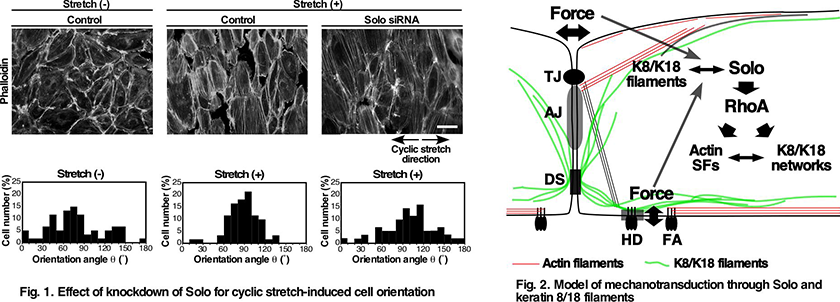Cell sensing and response to various external mechanical forces contribute to maintain the homeostasis of the body, metabolic regulation and to proper morphology of tissues. However, the molecular mechanism of the mechanical responses is poorly understood. We previously found that Solo (also named ARHGEF40), Rho guanine nucleotide exchange factor (Rho-GEF), is involved in cyclic stretch-induced reorientation of vascular endothelial cells (Fig. 1). In this study, we showed that Solo is required for tensile force-induced reinforcement of actin stress fibers and RhoA activation. Furthermore, we searched for Solo-binding proteins using proteomics analysis and found that Solo binds to keratin 8/18 filament, an intermediate filament. We also showed that Solo is involved in proper organization of keartin 8/18 networks, and the interplay between Solo and keratin 8/18 filaments is required for the tensile force-induced cell responses (Fig. 2). These results suggest that Solo functions to generate resisting forces against the external forces and to adopt to mechanical environment.

Fujiwara S., Ohashi K., Mashiko T., Kondo H., and Mizuno K.
Interplay between Solo and keratin filaments is crucial for mechanical force-induced stress fiber reinforcement.
Mol. Biol. Cell, 27: 954-966 (2016)
doi: 10.1091/mbc.E15-06-0417
URL: https://www.molbiolcell.org/doi/10.1091/mbc.e15-06-0417
